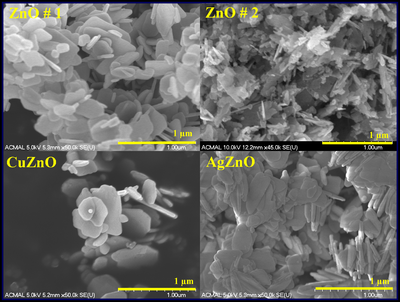J.M.Pearce (talk | contribs) (Created page with "{{MOST}} {{Pearce-pubs}} right|400px ==Source== * A. Chandrasekaran, J. Mayandi, J. Osborne, M. Frost, C. Ekstrum, J. M. Pearce. Inhibition of growth...") |
J.M.Pearce (talk | contribs) mNo edit summary |
||
| Line 18: | Line 18: | ||
*[[Optical modelling of thin film microstructures literature review]] | *[[Optical modelling of thin film microstructures literature review]] | ||
*[[Multi-resonant silver nano-disk patterned thin film hydrogenated amorphous silicon solar cells for Staebler-Wronski effect compensation]] | *[[Multi-resonant silver nano-disk patterned thin film hydrogenated amorphous silicon solar cells for Staebler-Wronski effect compensation]] | ||
[[Category:MOST completed projects and publications]] | |||
[[Category:Materials]] | |||
[[Category:Materials processing]] | |||
Revision as of 16:06, 14 July 2017

Source
- A. Chandrasekaran, J. Mayandi, J. Osborne, M. Frost, C. Ekstrum, J. M. Pearce. Inhibition of growth of S. epidermidis by hydrothermally synthesized ZnO nanoplates” Materials Research Express 4(7) 075401. https://doi.org/10.1088/2053-1591/aa796d [ open access]
Abstract
The antibacterial effect of zinc oxide (ZnO#1) as prepared and annealed (ZnO#2) at 400 °C, Cu doped ZnO (CuZnO), and Ag doped ZnO (AgZnO) nanoplates on Staphylococcus epidermidis was investigated for the inhibition and inactivation of cell growth. The results shows that pure ZnO and doped ZnO samples exhibited antibacterial activity against Staphylococcus epidermidis (S. epidermidis) as compared to tryptic soy broth (TSB). Also it is observed that S. epidermidis was extremely sensitive to treatment with ZnO nanoplates and it is clear that the effect is not purely depend on Cu/Ag. Phase identification of a crystalline material and unit cell dimensions were studied by x-ray powder diffraction (XRD). The scanning electron microscopy (SEM) provides information on sample's surface topography and the EDX confirms the presence of Zn, O, Cu and Ag. X-ray photo-electron spectroscopy (XPS) was used to analyze the elemental composition and electronic state of the elements that exist within the samples. These studies confirms the formation of nanoplates and the presence of Zn, O, Ag, Cu with the oxidation states +2, −2, 0 and +2 respectively. These results indicates promising antibacterial applications of these ZnO-based nanoparticles synthesized with low-cost hydrothermal methods.
See Also
- Peanut shaped ZnO microstructures: controlled synthesis and nucleation growth toward low-cost dye sensitized solar cells
- Effect of ambient combinations of argon, oxygen, and hydrogen on the properties of DC magnetron sputtered indium tin oxide films
- Advances in plasmonic light trapping in thin-film solar photovoltaic devices
- A novel synthesis of tin oxide thin films by the sol-gel process for optoelectronic applications
- Plasmonic Perfect Meta-Absobers for a-Si PV Devices
- Optical modelling of thin film microstructures literature review
- Multi-resonant silver nano-disk patterned thin film hydrogenated amorphous silicon solar cells for Staebler-Wronski effect compensation





